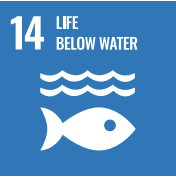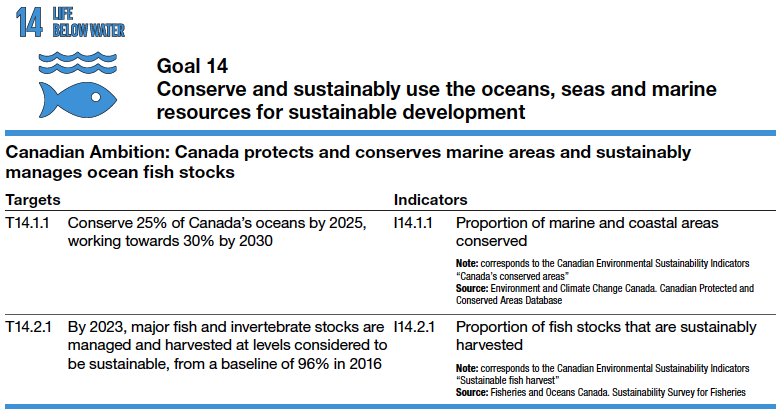Week 8
SDG #14 – Life Below Water

Video
In this 21-minute video made available from the SDG Academy, Jeffrey Sachs looks at human interactions with oceans and aquaculture, and the adverse effect it has had on marine ecosystems and well as fisheries.
Analysis
Analysis
Healthy and resilient oceans help to mitigate the effects of climate change, provide food security to millions of people around the world and drive economic activity through marine trade and transport[1]. The ocean drives global systems that make the Earth habitable for humankind. Our rainwater, drinking water, weather, climate, coastlines, much of our food, and even the oxygen in the air we breathe, are all ultimately provided and regulated by the ocean[2].
Rising sea levels, ocean acidification and thinning sea ice are affecting vulnerable regions, and coastal communities. Careful management of this essential global resource is a key feature of a sustainable future. However, at the current time, there is a continuous deterioration of coastal waters owing to pollution, and ocean acidification is having an adversarial effect on the functioning of ecosystems and biodiversity2. This is also negatively impacting small scale fisheries.
Canada has the world’s longest coastline, it borders the Pacific, Atlantic and Arctic oceans, and forms the one of the largest ocean bodies of any country in the world1. Coastal waters are deteriorating globally due to pollution and eutrophication. Roughly 80% of marine and coastal pollution originates from land, including agricultural run-off, pesticides, plastics, and untreated sewage2. In 2021, approximately 14% of Canada’s ocean was protected with government commitments to protecting 25% by 2025 and 30% by 2030[3].
Saving our ocean must remain a priority. Marine biodiversity is critical to the health of people and our planet2. Marine protected areas need to be effectively managed and well-resourced, and regulations need to be put in place to reduce overfishing, marine pollution, and ocean acidification.
Fast Facts
- Oceans cover three quarters of the Earth’s surface, contain 97% of the Earth’s water, and represent 99% of the living space on the planet by volume;
- Oceans produces over half of the world’s oxygen and absorbs 50 times more carbon dioxide than our atmosphere;
- Oceans transports heat from the equator to the poles, regulating our climate and weather patterns.
Climate change
- Oceans absorb 30% of carbon dioxide produced by humans, buffering the impacts of global warming;
- Carbon emissions from human activities are causing ocean warming, acidification and oxygen loss;
- Ocean heat is at record levels, causing widespread marine heatwaves.
Ocean and people
- Over 3 billion people depend on marine and coastal biodiversity for their livelihoods;
- Globally, the market value of marine and coastal resources and industries is estimated at $3 trillion per year or about 5% of global GDP;
- Marine fisheries directly or indirectly employ over 200 million people;
- Without concerted efforts, coastal eutrophication is expected to increase in 20% of large marine ecosystems by 2050;
- Plastic constitutes 90 percent of all of the trash floating on the ocean’s surface – approximately 46,000 pieces of plastic per square mile;
- Globally, one million plastic drinking bottles are purchased every minute, while up to 5 trillion single-use plastic bags are used worldwide every year;
- Approximately 680 million people live in low-lying coastal zones, that is expected to increase to a billion by 2050;
- Approximately 80% of the volume of international ‘goods’ trade is carried by sea, and the percentage is even higher for most developing countries;
- Sustainable and climate-resilient transport, including maritime transport, is key to sustainable development.
Why it Matters
Why should I care about the conservation and sustainable use of oceans, seas, and marine resources?
Oceans are the planet’s life support system. Phytoplankton, the tiny plant-like organisms (actually marine algae) that live in oceans are responsible for at least 50% of the oxygen on Earth. They are also the base of marine food webs. If phytoplankton were to dimmish, the livelihood of all marine life and the 3+ billion people who rely on oceans for survival would be in great jeopardy.
Targets and Indicators for Canada
Below is Canada’s approach to measuring progress on SDG #14 – Life Below Water. Note the targets and indicators chosen[4].

Recommended Reading
- United Nations. (2021). The Sustainable Development Goal Report, 2020. Conserve and sustainably use the oceans, seas and marine resources for sustainable development.
- Global Affairs Canada. (2018). Canada’s Implementation of the 2030 Agenda for Sustainable Development: voluntary national review. ↵
- United Nations. (2021). Sustainable Development Goals. ↵
- Canadian Parks and Wilderness Society. (2021). Assessing Canada’s Marine Protected Areas. ↵
- Statistics Canada. (2021). The Canadian Indicator Framework for the Sustainable Development Goals - 2021 ↵

